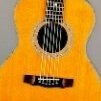Advice with problem using Nissin flash on Sony A7RII
-
Similar Content
-
Glue Advice
By MaryAnn,
- 8 replies
- 314 views
-
- 0 replies
- 974 views
-
- 0 replies
- 2,655 views
-
- 3 replies
- 3,161 views
-
- 2 replies
- 387 views
-



Recommended Posts
Create an account or sign in to comment
You need to be a member in order to leave a comment
Create an account
Sign up for a new account in our community. It's easy!
Register a new accountSign in
Already have an account? Sign in here.
Sign In Now